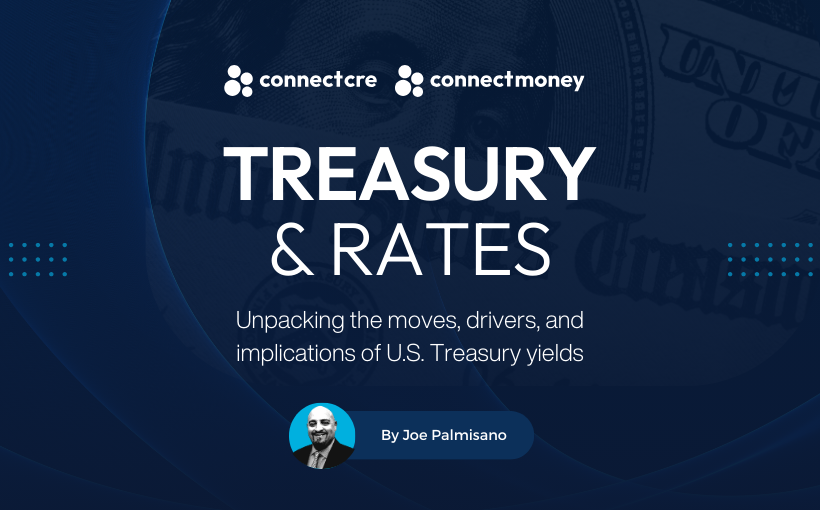Limited Downside for Yields Without Deeper Fed Cuts
Since the unexpected overhaul of U.S. trade policy by President Trump in April, concerns surrounding the economic and inflationary repercussions have surged. Amid this tumultuous landscape marked by tariffs and fiscal uncertainty, one element has remained relatively stable: Federal Reserve policy. The Fed’s decision to maintain its current stance has emerged as a significant constant in a rapidly evolving environment.
Current Rate Outlook: Fed’s Steady Hand
Market analysts are largely predicting that the Federal Reserve will maintain its interest rates during this week’s Federal Open Market Committee (FOMC) meeting, with little change anticipated in the upcoming month. Consensus aligns towards a potential rate cut in September; however, forecasts carry uncertainties due to ever-changing economic conditions.
Key Predictions:
- Current Expectations: The anticipation of approximately 100 basis points of cuts by mid-2026, bringing the fed funds target range down to 3.25% – 3.50%.
- 2-Year Yield: The policy-sensitive 2-year yield, closely reflecting rate expectations, currently hovers just below the Fed’s 4.33% effective funds rate.
Yield Dynamics: Understanding the Curve
The yield curve provides a glimpse into market perceptions regarding future interest rates. Presently, the spread between the 2-year yield and the current 10-year yield is approximately 110 – 115 basis points, with the latter sitting near 4.40%. However, when considering the 10-year SOFR swap spread, which adjusts the 10-year rate to around 4.00%, the effective spread flattens to approximately 55 basis points. This reduced space suggests limited potential for rates to decline significantly without more aggressive Fed action.
Can Yields Decline Further?
A modest decline in yields—around 25 basis points—could be within reach under current economic assumptions. However, to see a substantial decrease in long-dated yields, the Fed would need to implement cuts beyond market expectations.
Fed’s Stance: Caution Over Action
Federal Reserve officials have repeatedly expressed the need for patience regarding rate cuts. As Atlanta Fed President Raphael Bostic noted, “There is a great deal of uncertainty out there,” underscoring the necessity to assess how current ambiguities impact employment and prices.
Core Issues Facing the Fed:
- Inflation vs. Growth: The critical question revolves around whether tariffs will increase inflation or dampen growth. If tariffs drive prices upward, the Fed might lean towards rate hikes. Conversely, if they adversely affect consumption, cuts could be warranted.
- Stagflation Risks: The possibility of stagflation—where stagnant growth coincides with high inflation—could justify the Fed’s current cautious stance.
Inflation Insights: Mixed Signals
Recent data suggests a need for vigilance:
- Consumer Expectations: The New York Fed reports a decline in year-ahead consumer inflation expectations to 3.2%, though still above the 2% target.
- Core CPI: The core CPI remains elevated at 2.8% year-over-year, keeping policymakers on high alert.
Market-Based Insights:
- The 5-year breakeven rate hovers around 2.38%, indicating moderate inflation expectations that have recently trended upward.
Political Influence: Trump’s Pressure on the Fed
While President Trump continues to advocate for rate cuts, the Fed remains committed to awaiting clearer economic signals. As both tariff policies and inflation data fluctuate, hasty decisions could be counterproductive.
Economic Growth: Signs of Softening
Recent reports indicate a softening in economic growth:
- The Dallas Fed’s Weekly Economic Index has shown declines, hinting at broader economic deceleration.
- A large-scale spending bill being debated in the Senate might complicate the inflation landscape, although political gridlock may mute its potential effects.
Conclusion: The Trade-off of Holding Steady
In summary, while the Federal Reserve’s lack of movement may appear uninspired, maintaining a cautious approach seems prudent in the current climate. With inflation and growth risks counterbalancing each other and tariff policies continuously evolving, the decision to hold steady—though risky—stands as a strategic choice in uncertain times.
For more insights and updates on treasury rates, visit Connect CRE.


